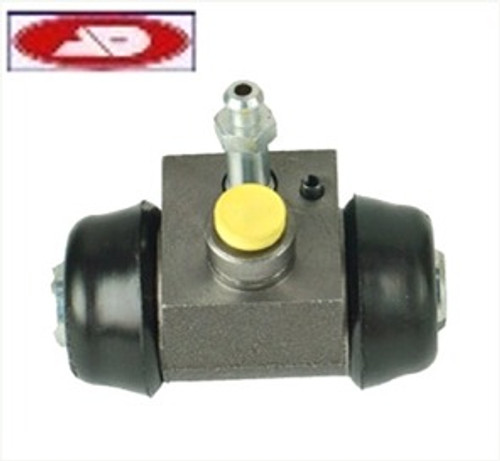Description
Lucas wheel bearing kit rear for a Triumph TR7 1977 to 1981, Triumph TR8. The kit includes bearing, seal and grease for one side. Cross Reference GHK1028 671-556.
A faulty wheel bearing can be difficult to diagnose. Because of that, some damage can occur without the driver knowing so it is important that drivers become familiar with all the symptoms of a bad wheel hub bearing. An obvious sign that you have a bad wheel bearing is noise coming from the wheel. The noise can vary greatly from a constant squeak to a low moan or rumble. This sound will change depending on your car's speed and whether you are turning or driving straight. A snapping, clicking, or popping sound heard when cornering or turning sharply indicates worn bearings. A grinding sound is a sure indicator that your hub bearings should be replaced.
Bearings are typically sealed with a rubber seal so if the seal wears out, the bearing can be contaminated with road grime or dirt, causing noise, excessive play, and rough soung. Any pitting or corrosion of the wheel bearing will cause vibrations or drag in the bearing and this will be transferred to the tires. This will make the car feel as if it pulls to one side or the other if you loosen your grip on the steering wheel.
Symptoms of a bad bearing will also show on the the tries. Rotating your tires evens the wear on them, but faulty bearings can cause uneven wear on tires. If you regularly rotate your tires and still notice wear, you likely have a faulty bearing.
Bad bearings will also make your car feel loose as it is driving down the road. As bearings wear out, they loosen up inside the spindle and hub, making your driving feel somewhat shaky.
You can learn how to spot this problem with some simple techniques. Identifying any unusual noises coming from the wheels is one of the most frequent symptoms. Another sign that a bearing needs replaced is excessive play in the wheel. In order to determine if the wheel has play, you need to raise the wheels, firmly grasp the wheel and shake it. If there is any movement, then the wheel has play and the bearing needs to be replaced.
Hub temperature is an often overlooked symptom of worn bearings. If the hub is more than slightly warm after a drive of around 10 miles then the bearing is not doing its job and should be replaced.
If your wheel exhibits a high degree of play or movement in the tires, then you likely will have to replace that wheel hub bearings. A tire should have very little to no play. You can conduct a simple test to determine if your wheel has play.
In order to look at the bearings without taking off the wheels, use a jack to raise the front wheel off the ground. Support the vehicle using jack stand. When the suspected wheel is lifted off the ground, place your hands at the 12 and 6 positions. Shake the wheel. If there is excessive movement, your wheel has play and the hub bearing should be replaced.




